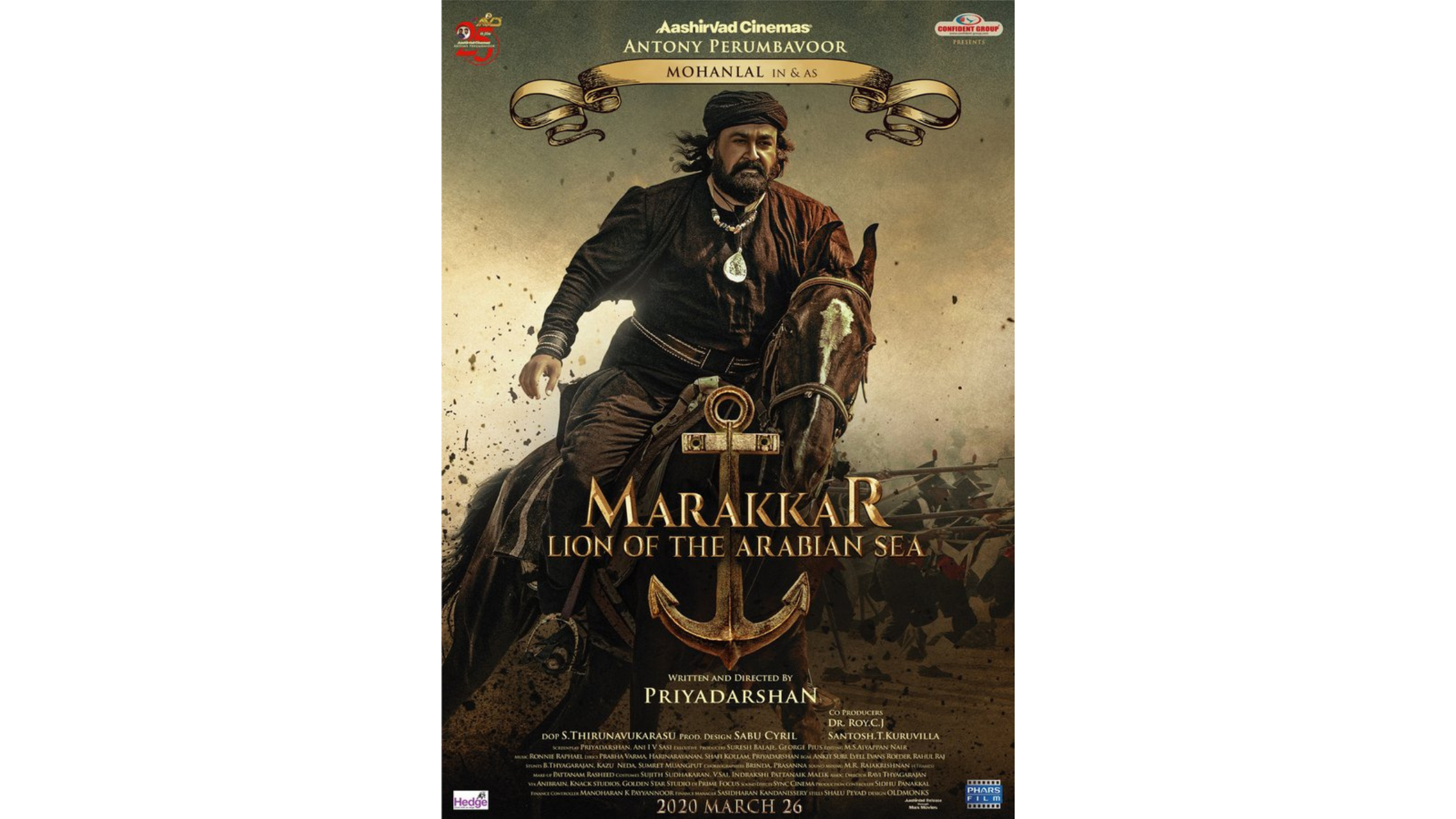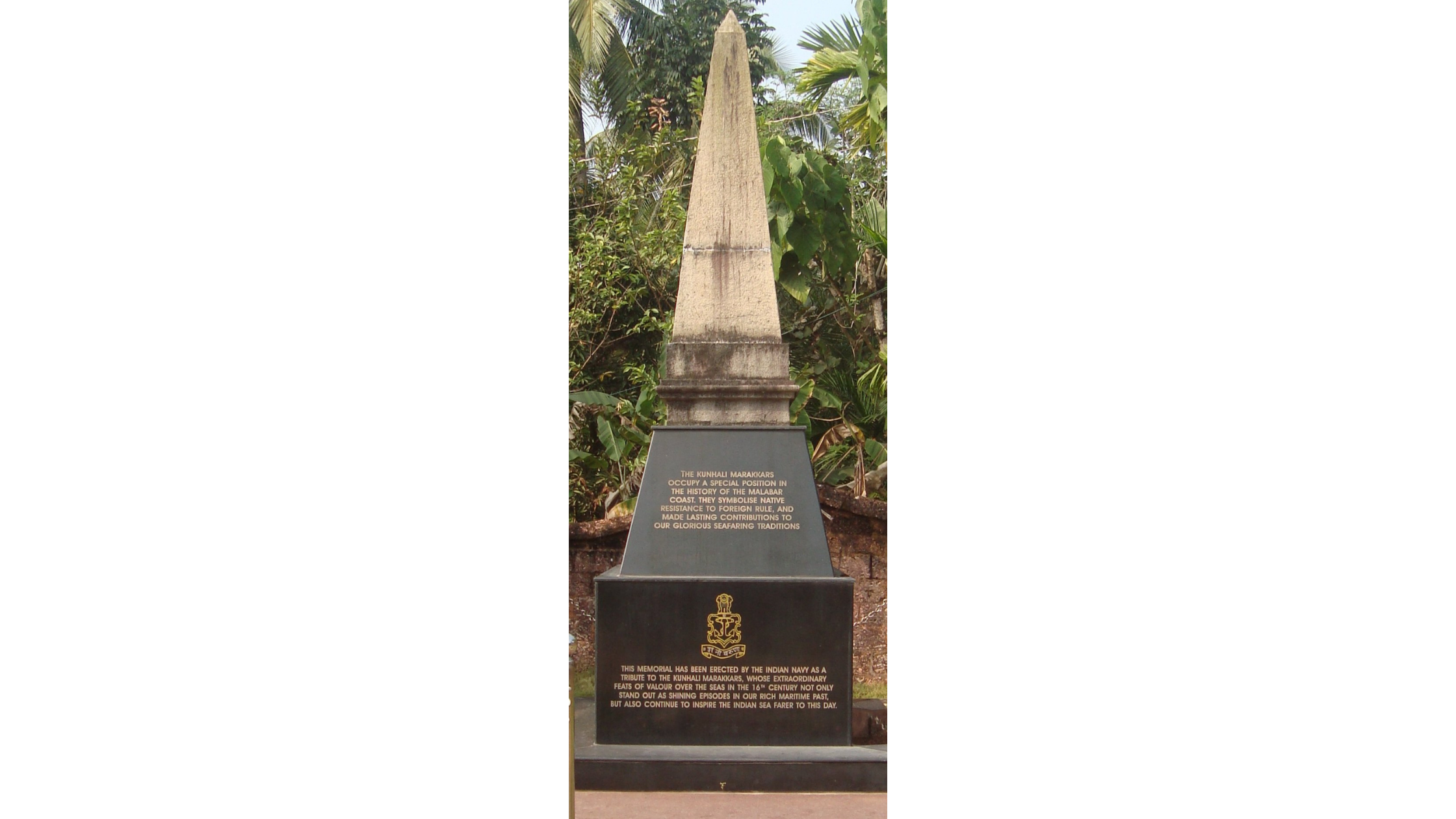This is the story of Marakkars, an Indian community of Muslims that mostly lived in the kingdom of Cochin and harassed the Portuguese colonisers.
Mollywood, as the Malayalam film industry is called, isn’t traditionally known for epic blockbusters, but that changed recently! Marakkar: Lion of the Arabian Sea, (Marakkar, Arabi kadalinte Simham) a historical drama with a massive 100 crore budget, was released in theatres all over India. It won several State and National Film awards. In the film, the actor Mohanlal, probably Mollywood’s most famous scion, plays Kunjali Marakkar IV, a Muslim admiral who fought against the Portuguese in the 16th century.

Cinematic epics sometimes take liberties with historical characters and events are often over-dramatised for effect. What does history actually tell us about Kunjali Marakkar?
Let’s go back in time to the beginning of the 16th century and zoom in on the kingdoms of Cochin and Calicut on the Malabar coast. Cochin and Calicut were rival states but both boasted of diverse religious populations. Multiple different communities of Hindus, Christians, Jews and Muslims called this little stretch of land home.
The Marakkars were a community of Muslims that mostly lived in the kingdom of Cochin. They dominated the trade between the Coromandel and Malabar coasts (what would now be the coasts of Tamil Nadu and Kerala). They owned ships and traded in spices and other goods, mostly destined for Europe. These goods would travel via the Red Sea and the entire network was dominated by Arab and other Muslim traders. When the Portuguese first arrived, they liaised with these Muslim trading networks. Many Marakkar merchants would become their agents and trade in spices like pepper for them.
But the Portuguese would not maintain this peaceful trading relationship for long. As far as they were concerned, they were the lords of the sea by divine order of the Christian church. As their military and economic power along the Indian coast grew, they suddenly ended their relationship with the Marakkars. Some historians argue that this was a part of the broader Portuguese objective to replace the Muslim network with a Christian one. The Portuguese navy began to confiscate Marakkar ships and cargo on charges of improper documentation.There are also reports of torture and violence by the Portuguese against the sailors caught trading without a license. As we talked about in this earlier post about Kanhoji Angre, European colonizers were quick to label their rivals as pirates, despite their own predatory behaviour being worse.

One of the Marakkars, Kunjali Marakkar, moved with some members of his family from Cochin (which was working with the Portuguese) to the kingdom of Calicut. The ruler of Calicut, the Samuthiri (or Zamorin as he was known to Europeans), had strained relations with the Portuguese ever since they tried to arm twist him. Kunjali Marakkar brought his ships and his men and joined the Samuthiri’s cause as an Admiral. For the next 14 years, Kunjali Marakkar expanded Calicut’s trade while simultaneously attacking and capturing any Portuguese vessels he could. It was a violent and bloody period of naval warfare with both sides showing no mercy.
In 1539, Kunjali Marrikar was captured by the Portuguese after a hard-fought battle and was beheaded. This only temporarily ended the hostilities as his descendants took up the fight. This continued for decades. Towards the end of the 16th century, this same descendants began to believe that they needed a separate Muslim kingdom like the Arakkal city-state in Cannanore (modern Kannur) ruled by Ali Raja. Simultaneously, the Zamorin sensed the shifting of political power and began to take a more conciliatory approach with the Portuguese. It’s not clear who betrayed whom first. Did the Marakkars no longer feel the need to ally with the Zamorin? Or did the Zamorin suddenly turn and join hands with the Portuguese? We’re not sure!
What we do know is that in 1600, a joint army of the Portuguese and the Zamorin’s troops defeated the Marakkar navy and captured their leader (who might’ve taken the same name as his ancestor and called himself Kunjali Marakkar IV). Eventually, he was taken to Goa where he was beheaded just like the original Kunjali Marakkar more than half a century previously.

While this new Mollywood movie romanticises the Marakkars, it’s good to remember that history is interesting enough without a layer of filmy varnish!
Did you enjoy this story? Read more about the Portuguese in India in these posts:
Most people credit Vasco da Gama with establishing Portuguese power in India. That honour should go to Captain-Major Duarte Pacheco Pereira. Read his story here: The Portuguese soldier who saved Kochi
And this is the story of Garcia de Orta, a Portuguese physician, who wrote one of the first books printed in India, published way back in 1563! The Portuguese doctor who fled to India
If you’re interested in learning more about the history of Kerala, walk with us on the Kingdom of the Gods walking tour in Trivandrum.
Image Attribution:
1. Poster for Marakkar: Arabikadalinte Simham – Aashirvad Cinemas, Moonshot Entertainments and Confident Group, Phars Film. Licensed under fair use
2. The Kunjali Marakkar Memorial erected by the Indian navy at Kottakkal, Vatakara – By Nmkuttiady – Own work, CC BY-SA 3.0, https://commons.wikimedia.org/w/index.php?curid=12725967
3. The Zamorin of Calicut on his throne as painted by Veloso Salgado in 1898 – Public Domain
Archives
- January 2022
- December 2021
- November 2021
- August 2021
- March 2021
- February 2021
- January 2021
- December 2020
- November 2020
- October 2020
- September 2020
- August 2020
- April 2020
- March 2020
- February 2020
- January 2020
- November 2019
- October 2019
- September 2019
- August 2019
- July 2019
- June 2019
- August 2017
- February 2017
- January 2017
- October 2013
Featured Posts
- Tales that pots tell: Keeladi excavations AUGUST 18, 2021
- The Last Grand Nawab: Wallajah FEBRUARY 10, 2021
- How Tej Singh became Raja Desingu of Gingee FEBRUARY 5, 2021
- How Shahjahan seized the Mughal throne JANUARY 28, 2021
- Alai Darwaza – Qutub Minar Complex, Delhi NOVEMBER 21, 2020
- Marking History through British buildings NOVEMBER 17, 2020
- The last great queen of Travancore NOVEMBER 7, 2020
- Brahmi and the evolution of scripts OCTOBER 15, 2020
- The Cambodian King of Kanchipuram OCTOBER 14, 2020
- James Prinsep – the man who read the writing on the wall OCTOBER 10, 2020
- Mariamman – the Village Goddess who travelled SEPTEMBER 30, 2020
- Misnamed Monuments of Mamallapuram SEPTEMBER 28, 2020








